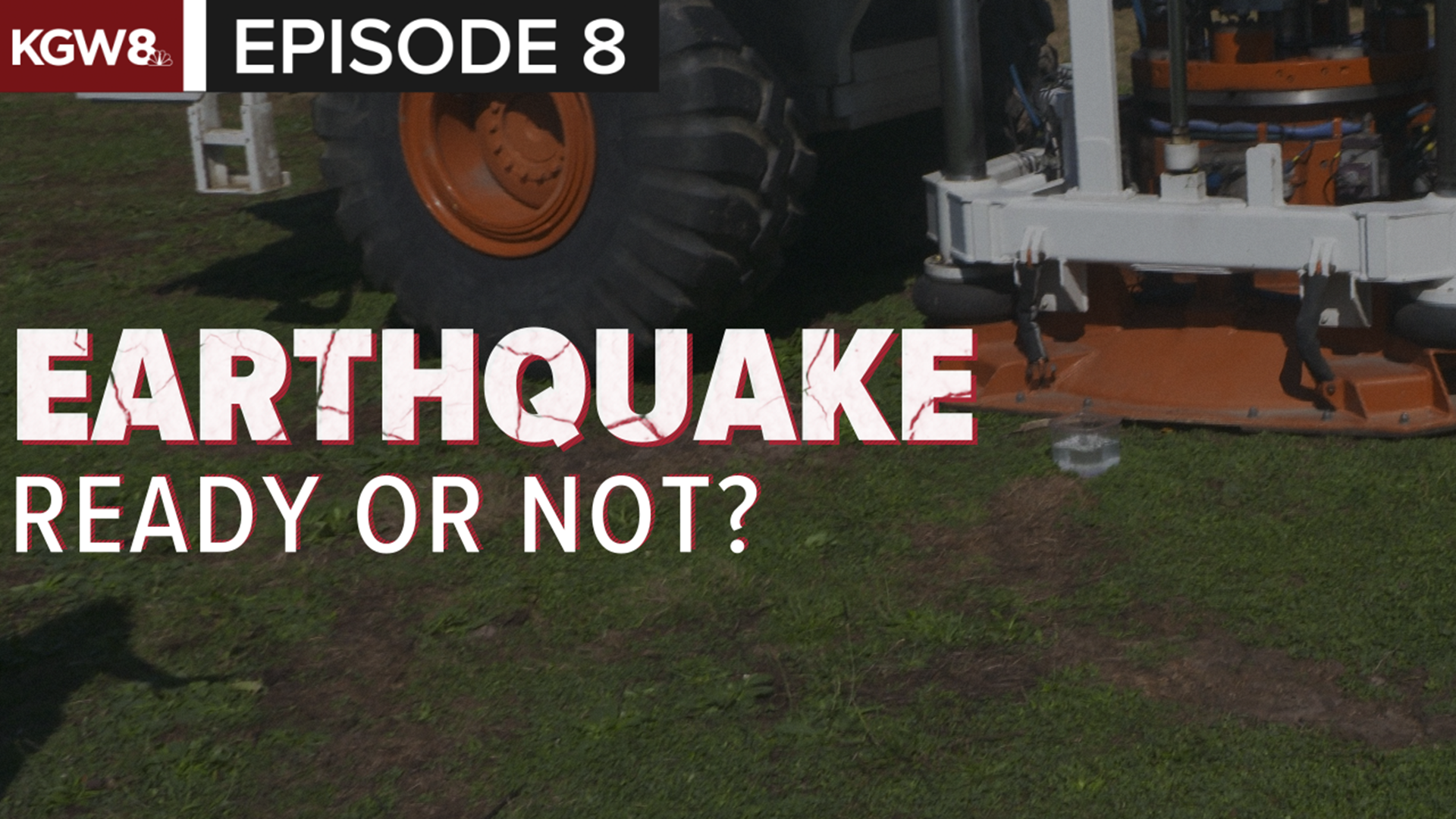PORTLAND, Ore. — Some might say the Willamette River defines the city of Portland. Its flowing water attracts boaters, fishers, and swimmers by the thousands every year and its beauty draws nature-lovers to its banks every day.
But alongside that beauty is also a hidden risk we cannot see, at least not until the ground starts to shake.
That's exactly what scientists say will happen when the Cascadia Subduction Zone, a coastal fault some 150 miles away, ruptures generating a magnitude-8 or 9 earthquake.
Within minutes, the quake's damaging shock waves will reach Portland.
The intense shaking will turn once solid ground into a something more like soup. That's a phenomenon called liquefaction.
"Liquefaction is the state of soil that, because of shaking, the soil essentially turns into liquid," said Dr. Arash Khosrivifar.
It's the same phenomenon that swept away entire neighborhoods in Indonesia last year during a magnitude-7.5 quake. It's an issue Khosrivifar and his colleagues at Portland State University have been studying for years.
"We have a huge liquefaction problem in Portland," he said
Basically anywhere you have loose soils or sands that are saturated, along with the potential for earthquakes, you have the risk of liquefaction.
The San Francisco waterfront, for example, like the Marina District, is at risk. So is the Los Angeles harbor.
Much of the city of Seattle sits on liquefiable soil. Following the 6.8 Nisqually earthquake in 2001, Boeing Field airport had to be shut down. Liquefaction had damaged the runway.
Portland International Airport is sitting on one of those areas.
As is the Northwest Industrial Area, where much of the region's fuel is stored.
"You can kind of get a sense of it if you look at Google Earth maps and you look down along that area you can see the white tanks which are all containing the fuel," said Khosrivifar, "the fuel that Portland and Oregon uses."
Those miles of white tanks lining the river store about 90 percent of Oregon's fuel including nearly all of the jet fuel used at the Portland airport.
When the ground below them liquefies in a large earthquake, those tanks will likely fail.
"Should the earthquake hit, the ground will liquefy and the tanks will become unstable and potentially spill into the Willamette River, which is an environmental hazard, but also we then don't have our fuel source following the earthquake," the doctor explained.
The doctor, in collaboration with the National Science Foundation and Arizona State University, is working to solve that problem on the Northeast Portland test site just a few miles from the airport, using something invisible to the naked eye.
"We're using the bacteria and the bugs that are already in the soil, we're just stimulating them and they're doing all the work for us."
That's right. Tiny bugs.
"This is called bio-remediation method," he said. "It essentially uses the bio organisms in the soil, that are already in the soil, to de-saturate the soil."
It's the first time this technique has been tested in the United States.
The team injects a mixture of fertilizer and food-grade material into wells.
The microscopic bugs already in the ground eat the fertilizer. As the little guys metabolize their food, they create bubbles which in then help to dry out the soil.
Four weeks later, the soil is tested to see if it will stay solid in a major quake.
The obvious questions? How do you test the soil to see what it will do in an earthquake without a quake? The answer: You make the ground shake.
That's where a machine called T-Rex comes in.
The monster machine simulates the shaking of an earthquake.
The result?
"We were able to get from the T-Rex testing was able to show us that the de-saturation we were able to accomplish with the treatment did in fact result in mitigating liquefaction," said Khosrivifar.
Traditional methods to stabilize liquefiable ground often involve injecting cement or building some sort of stone column in the ground to try and stabilize the soil under the structure at a cost of millions of dollars and in the case of the soil in Portland may not even work.
The researchers say this new method would cost a fraction of that price.
"Other mitigation efforts are about 50 to a hundred times more expensive and a lot of times you can't apply them to existing structures," said Khosrivifar.
It would have minimal impact on the environment but a major impact when it comes to keeping shaking soils stable during a large quake.
"This could be a game changer in mitigating liquefaction risk," said Khosrivifar "Not just in Portland but all over the world."

